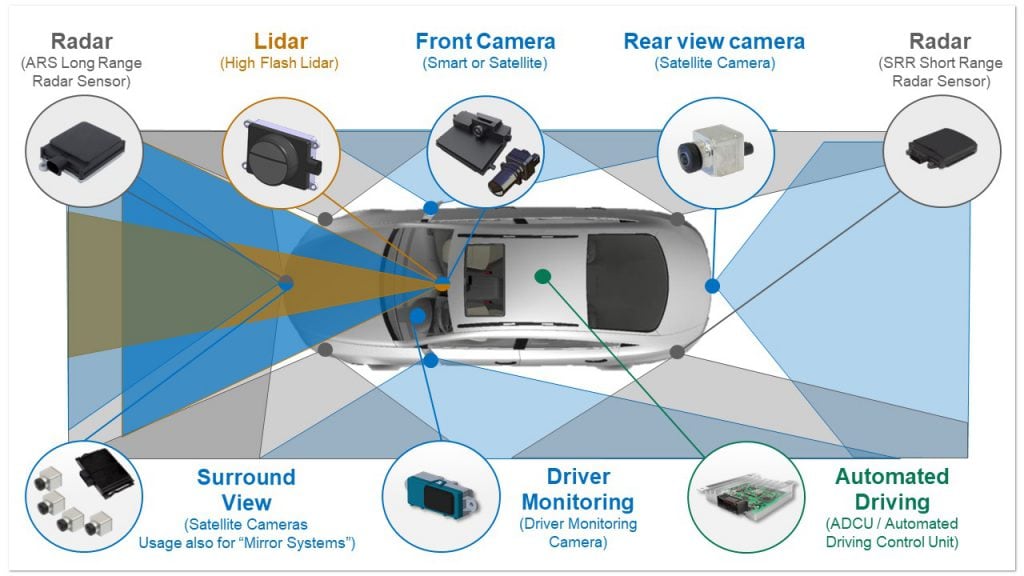
10 Advanced Driver Assistance Systems (ADAS): Enhancing Safety and Convenience – In the rapidly evolving landscape of automotive technology, Advanced Driver Assistance Systems (ADAS) have emerged as a critical component, revolutionizing the driving experience and prioritizing safety and convenience. These systems leverage cutting-edge technologies to assist drivers in various aspects of vehicle operation, contributing to a safer and more comfortable driving environment. In this article, we delve into the realm of ADAS, exploring its features, benefits, and the future it envisions for road safety.

1. Understanding ADAS: A Multifaceted Approach to Driver Assistance
ADAS encompasses a diverse array of technologies designed to assist drivers in various facets of vehicle operation. These systems leverage sensors, cameras, radar, and other advanced technologies to gather real-time data and provide timely feedback to drivers. From collision avoidance to parking assistance, ADAS aims to enhance both safety and convenience on the road.
2. Collision Avoidance Systems: Preventing Accidents Before They Happen
One of the primary objectives of ADAS is to prevent collisions through advanced warning and intervention systems. Collision avoidance features include forward collision warning, automatic emergency braking, and lane departure warning. These systems utilize sensors to monitor the vehicle’s surroundings, detect potential hazards, and intervene if the driver fails to react promptly.
3. Adaptive Cruise Control: Smart Speed Management for Safety

Adaptive Cruise Control (ACC) is a key feature of ADAS that enhances traditional cruise control. ACC uses sensors to maintain a set speed while also adjusting the speed based on the distance to the vehicle ahead. This smart speed management system promotes safety by ensuring a consistent and safe following distance.
4. Parking Assistance: Simplifying Tight Maneuvers

ADAS includes parking assistance systems that simplify the often challenging task of parking. Automated parking features use sensors and cameras to detect parking spaces and assist the driver in maneuvering into them. This not only enhances convenience but also reduces the likelihood of parking-related accidents.
5. Blind Spot Detection: Eliminating Hidden Dangers

Blind spot detection systems use sensors to monitor areas that may not be visible to the driver, alerting them to the presence of vehicles in their blind spots. This feature significantly reduces the risk of collisions during lane changes and enhances overall awareness.
6. Lane-Keeping Assistance: Guiding Drivers Toward Safety

Lane-keeping assistance systems help prevent unintentional lane departures. Using cameras and sensors, these systems detect lane markings and provide gentle steering input or warnings to keep the vehicle within its lane. This feature is especially valuable in preventing accidents caused by driver fatigue or distraction.
7. Driver Monitoring Systems: Focusing on Safety

Driver monitoring systems use advanced technologies, such as cameras and sensors, to track the driver’s behavior and level of attention. If signs of drowsiness or distraction are detected, the system can issue warnings to prompt the driver to refocus on the road, thereby enhancing overall safety.
8. Intersection Assistance: Navigating Complex Crossroads

Intersection assistance features provide additional support when navigating intersections, which are common locations for accidents. These systems can detect oncoming traffic, pedestrians, and potential collision risks, providing alerts or interventions to prevent accidents.
9. Benefits of ADAS: Elevating the Driving Experience

The incorporation of ADAS into modern vehicles brings a multitude of benefits, contributing to both safety and convenience. Some of the key advantages include:
a. Improved Safety:
ADAS features actively contribute to reducing the number of accidents and enhancing overall road safety.
b. Enhanced Driver Convenience:
Automated features, such as parking assistance and adaptive cruise control, simplify driving tasks and make the driving experience more enjoyable.
c. Decreased Driver Fatigue:
Systems like lane-keeping assistance and driver monitoring help combat driver fatigue, promoting safer journeys.
d. Prevention of Collisions:
Collision avoidance systems play a pivotal role in preventing accidents by providing timely warnings and interventions.
10. Future Trends: Towards Autonomous Driving
The evolution of ADAS is intricately linked to the broader trajectory toward autonomous driving. As technology continues to advance, the integration of more sophisticated sensors, artificial intelligence, and connectivity features will pave the way for higher levels of automation, ultimately shaping the future of transportation.
Conclusion article 10 Advanced Driver Assistance Systems (ADAS): Enhancing Safety and Convenience
In conclusion, Advanced Driver Assistance Systems represent a cornerstone of modern automotive safety,* seamlessly blending cutting-edge technology with the goal of enhancing driver safety and convenience. As these systems continue to evolve and become more sophisticated, the driving experience is poised to undergo further transformations, moving toward a future where road safety is not just a priority but a technologically empowered reality. ADAS stands as a testament to the potential of technology to create a safer, more efficient, and enjoyable driving environment for all.
Read More : Hybrid Technology Advancements 2024: The Evolution of Combustion and Electric








1 thought on “10 Advanced Driver Assistance Systems (ADAS): Enhancing Safety and Convenience”
Comments are closed.